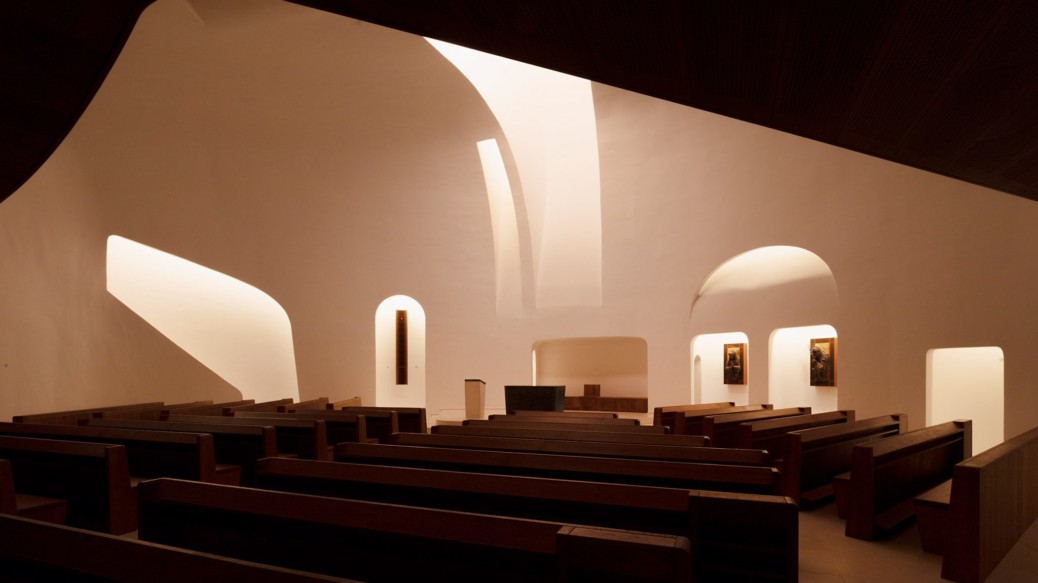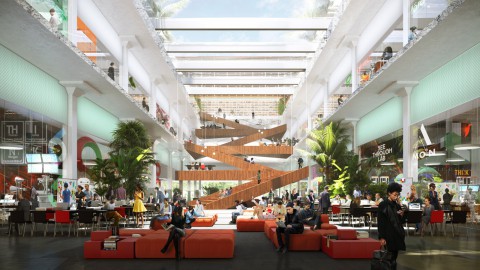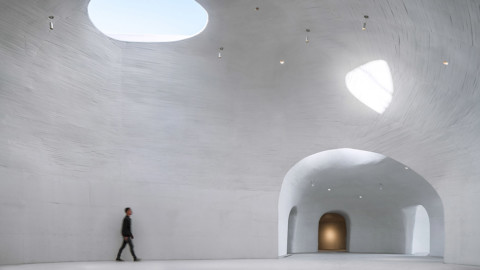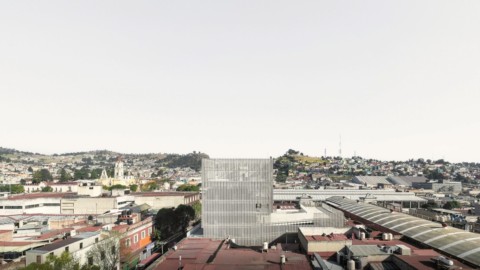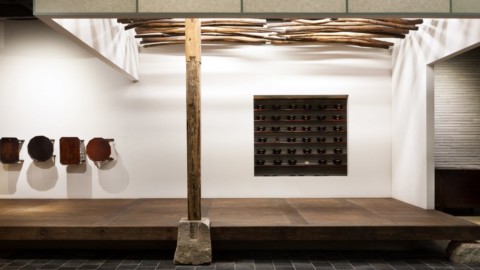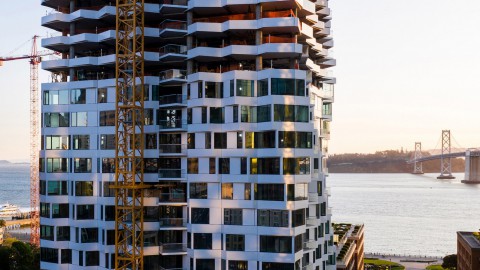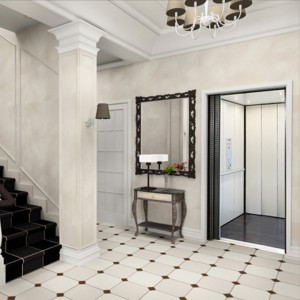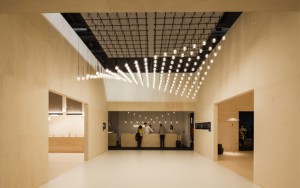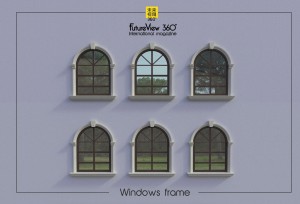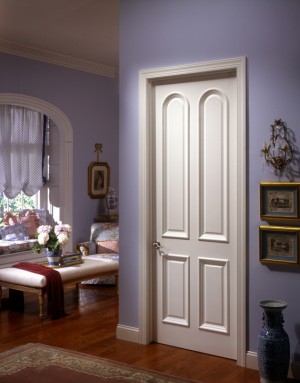The Church of Pope John Paul II in Páty, Hungary, is a crescent-shaped building featuring skewed angles and whitewashed concrete that aims to turn “passive observers” into active participants of worship.
Local practice Robert Gutowski Architects filled the church in the village of Páty in Budapest with modern takes on traditional aspects of Medieval, ecclesiastical architecture.
The intention was to shift the emphasis towards the altar and the congregation to make the act of worship more engaging.
匈牙利帕蒂的教皇約翰·保羅二世教堂為月牙形建築,具有傾斜的角度和粉刷過的混凝土,旨在將“被動的觀察者”變成積極的敬拜者。
本地實踐Robert Gutowski Architects在布達佩斯的Páty村的教堂裡充滿了中世紀,教會建築的傳統特色。
目的是將重點轉移到祭壇和會眾上,以使敬拜活動更具吸引力。
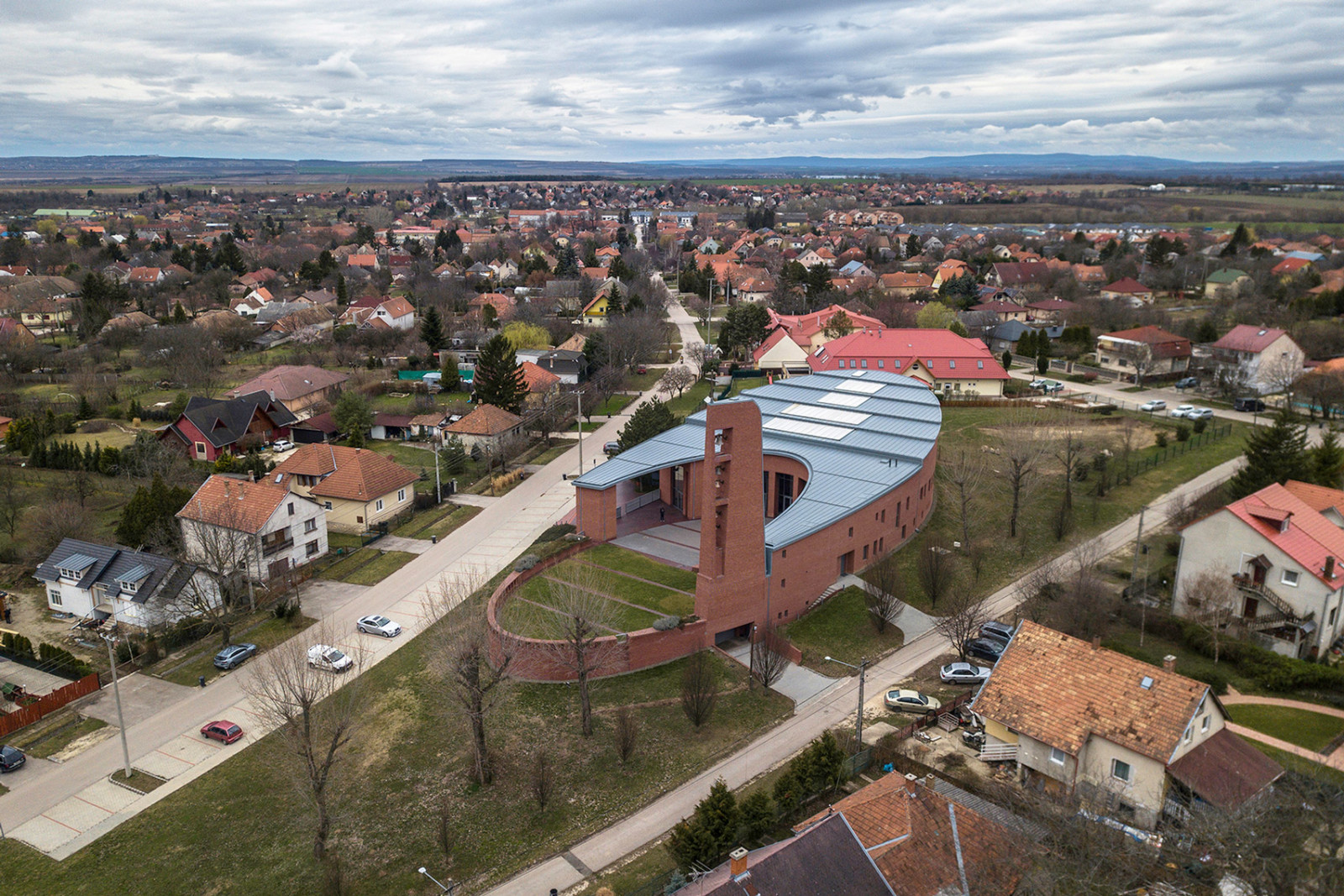
Traditional churches typically have a rectangular floor plan and are made up of a nave – the central part of the church – and an apse – the semicircular or polygonal area at the end of the aisle, usually located behind the altar.
The Church of Pope John Paul II, however, has an elliptical layout, made up of the crescent-shaped building of worship that wraps around an adjoining oval-shaped outdoor space.
Therefore what would typically be the nave of a conventional church functions as the churchyard or garden, while the liturgical space is situated where the apse would be.
傳統教堂通常有一個矩形的平面圖,由教堂中殿(教堂的中央部分)和後殿(在過道末端的半圓形或多邊形區域)組成,通常位於祭壇後面。
然而,教宗若望保祿二世教堂採用橢圓形佈局,由新月形的禮拜堂組成,教堂周圍環繞著橢圓形的戶外空間。
因此,傳統的教堂的中殿通常起著教堂的庭院或花園的作用,而禮儀空間則位於後殿的所在地。
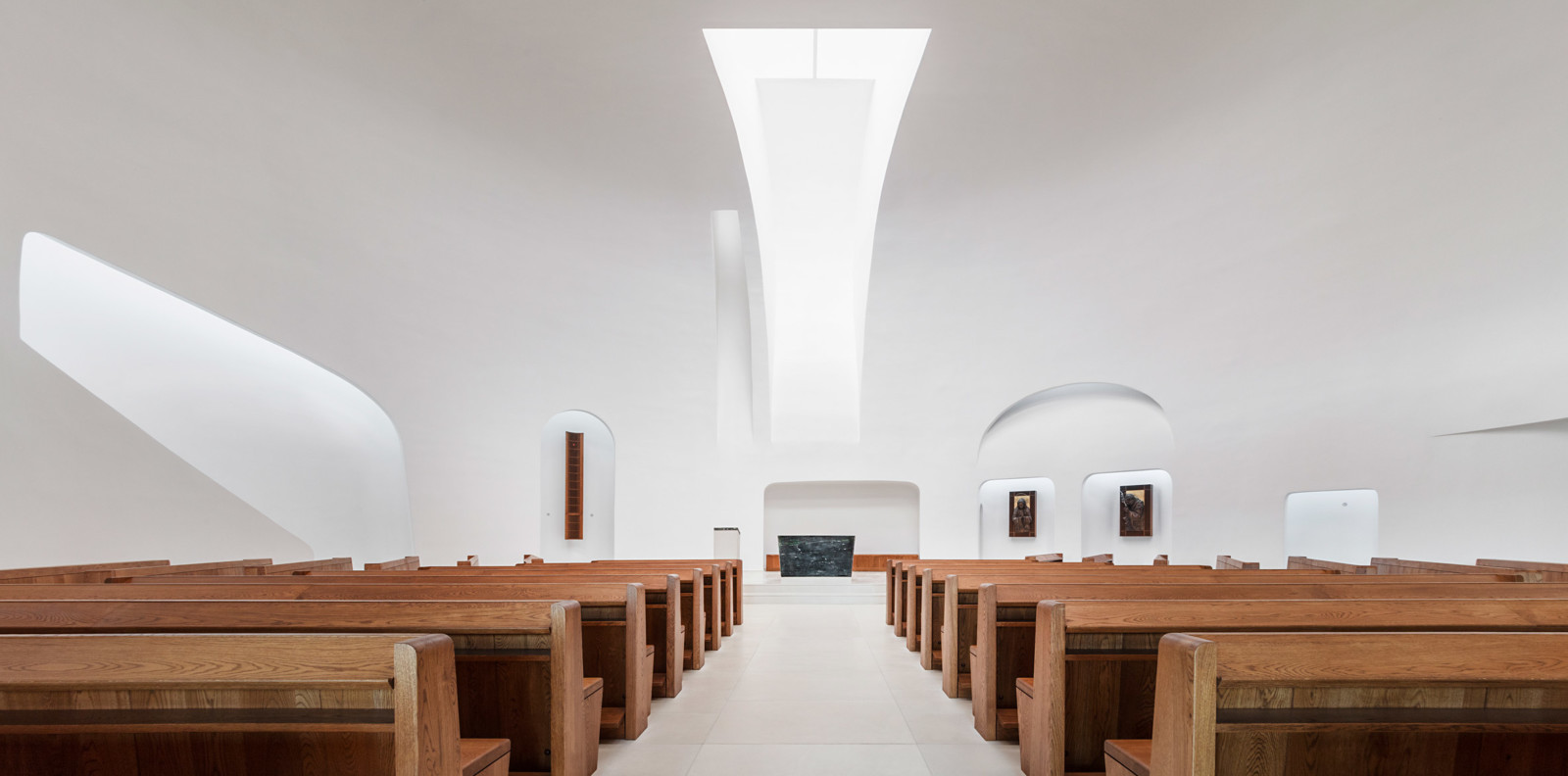
As studio founder Robert Gutowski explains, this layout was designed to place more emphasis on the communal experience of the Eucharist and to “invite people closer to the holy act” at the altar.
“If you like, we invite people into the apse, surrounding the altar, forming a community,” the architect explained. “It is also similar to the liturgy of early times, when Paleochristians simply surrounded a table in their own home – what is known as Domus Ecclesiae.”
正如工作室創始人羅伯特·古托夫斯基(Robert Gutowski)解釋的那樣,這種佈局旨在更加強調聖體聖事的共同經歷,並“在祭壇上邀請人們離聖潔行為更近”。
建築師解釋說:“如果您願意,我們邀請人們進入祭壇,圍繞祭壇,形成一個社區。” “這也與早期的禮拜式相似,當時古基督教徒只是在自己家中圍了一張桌子,這就是所謂的多莫斯教區。”
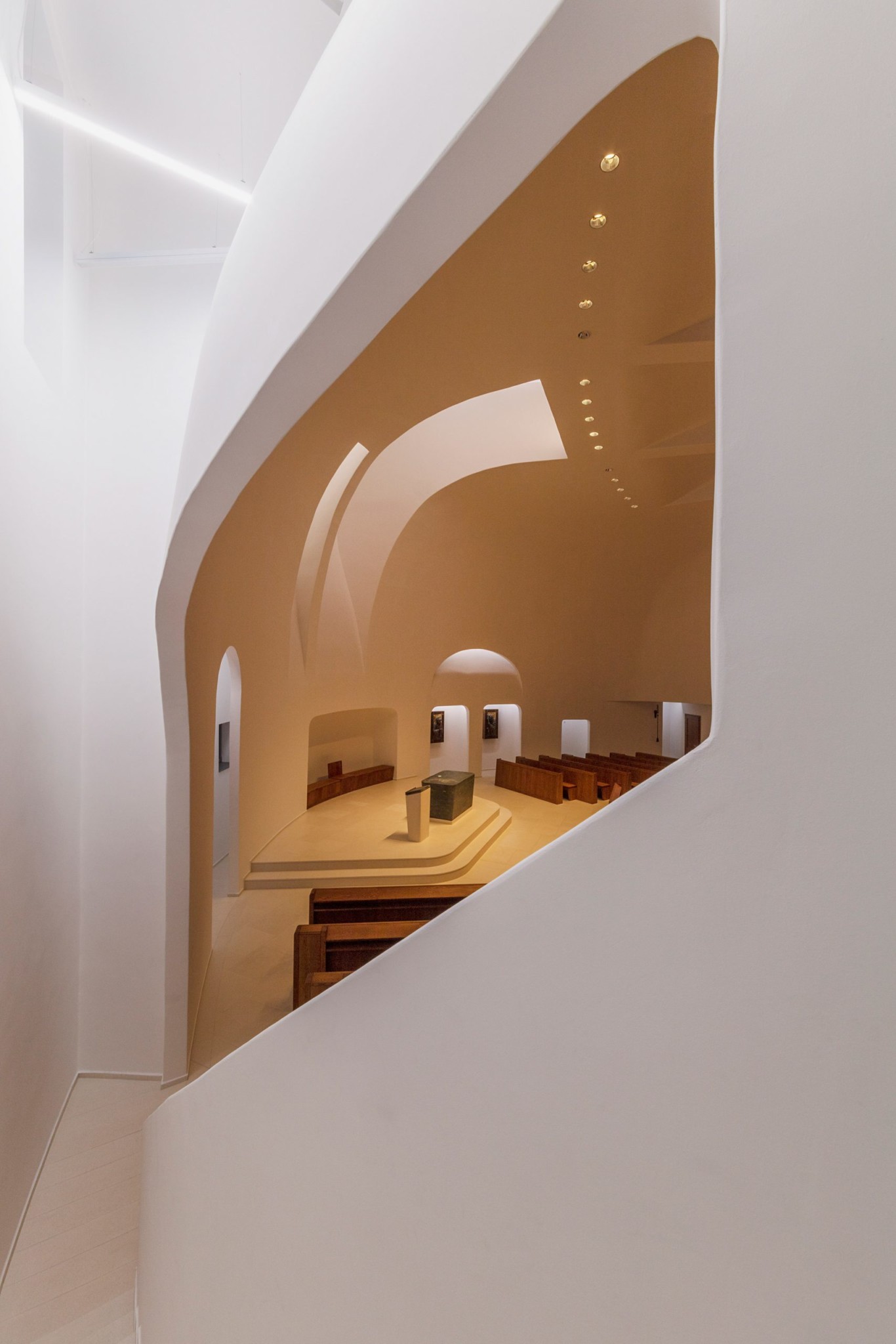
“The church clearly defines its purpose: while the Creator and the almighty God are at the centre of traditional liturgy, modern liturgical efforts have shifted emphasis to the recreator God, the image of a perpetually redeeming Christ,” Gutowski added.
“The Church of Pope John Paul II represents a conscious response to liturgical changes in recent decades, rendering it a model church experiment in contemporary church architecture,” he continued.
“Emphasis is shifted toward the active involvement of worshippers.The community is not a passive observer of events in a sanctuary, but rather actively experiences the holy act.”
古托夫斯基補充說:“教會明確地定義了它的目的:當造物主和全能的上帝處於傳統禮拜儀式的中心時,現代禮拜儀式的努力已將重點轉移到了重建者上帝身上,這是永久救贖基督的形象,”古托夫斯基補充說。
他繼續說:“教宗若望保祿二世教堂代表了近幾十年來對禮儀變革的有意識回應,使其成為當代教堂建築中的典範教堂實驗。”
“重點轉向朝拜者的積極參與。社區不是對聖所事件的被動觀察者,而是積極地體驗聖潔行為。”
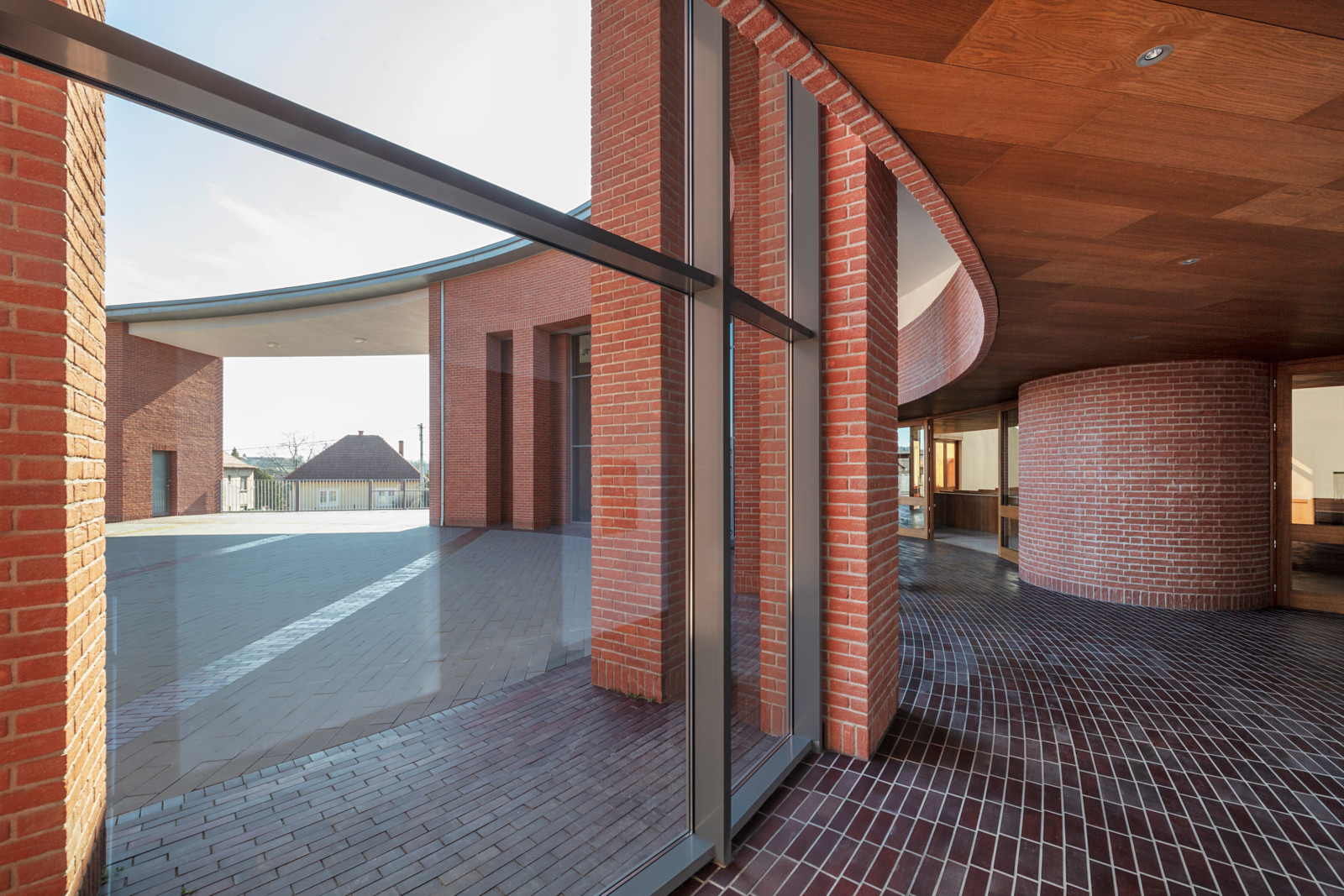
Several rooms lead off of the central, liturgical space, including a communal room, a service room and an office on the ground floor, and an educational room, guest room, the priest’s living quarters, and access to the bell tower on the first floor.
Each of these rooms are enclosed in one, whole elliptical floor plan – a form chosen to symbolise “perpetuity” and to create a holistic space.
“The concept is that when we say ‘church’, this does not refer only to the part of the chapel, but rather to the whole community building in one singular form,” explained Gutowski.
幾個房間通向中央的禮堂空間,包括一樓的公共室,服務室和辦公室,以及一間教育室,客房,牧師的居住區,以及通往一樓鐘樓的通道。 。
這些房間中的每一個都被封閉在一個完整的橢圓形平面圖中,這種平面圖被選擇用來象徵“永久性”並創建整體空間。
Gutowski解釋說:“概念是,當我們說“教堂”時,這不僅指教堂的一部分,還指一種單一形式的整個社區建設。
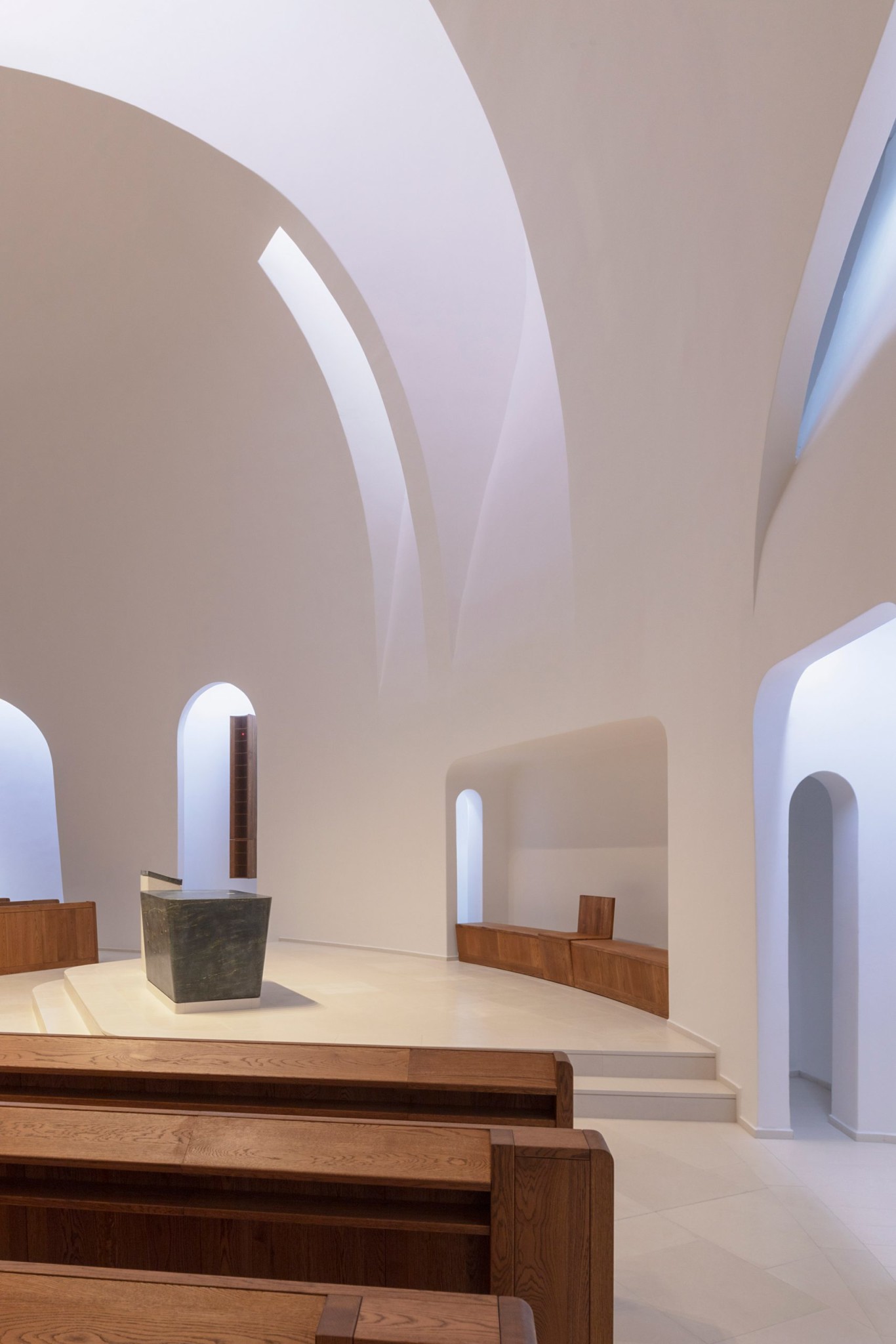
The two ellipses formed by the crescent-shaped church and the adjoining yard have been set at different axes. This is following the historically “inaccurate” layout of traditional churches, wherein the nave and the apse tend to be slightly off-centre of each other.
“We cannot name one single church that sits on the same axis, because pretty much all of the historical churches in Europe have this tiny ‘mistake’, which actually became a symbol of the broken body of Christ,” added Gutowski.
This symbol of Christ’s broken body has been extended to the church interior, which features walls set at slanted, uneven angles.
新月形教堂和相鄰院子形成的兩個橢圓設置在不同的軸上。 這是遵循傳統教堂的歷史上“不准確”的佈局,在該佈局中,中殿和後殿往往彼此偏心。
古托夫斯基補充說:“我們不能命名一個座落在同一軸線上的教堂,因為歐洲幾乎所有的歷史教堂都存在這個微小的’錯誤’,實際上這成為了基督破碎之身的象徵。”
基督身體破碎的象徵已延伸到教堂內部,其牆壁以傾斜的不平坦角度設置。
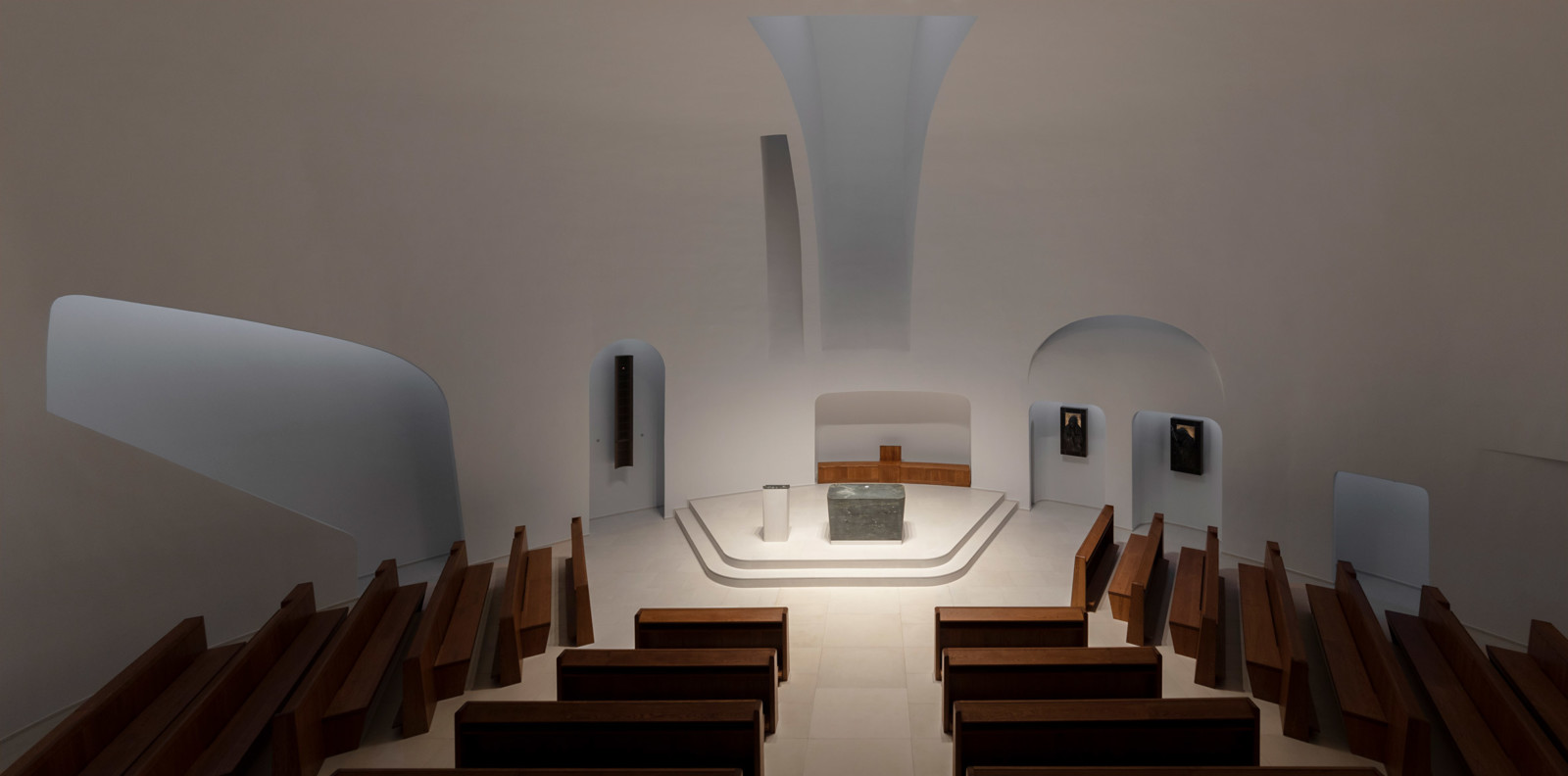
The domed ceiling, made from reinforced concrete, is lined with spotlights that illuminate various sacral functions such as the area of the altar and surrounding alcoves filled with religious artworks.
A rectangular cutout in the ceiling also fills the room with natural light, which is directed particularly at the centre towards the altar.
由鋼筋混凝土製成的圓頂天花板上襯有聚光燈,照亮了各種various功能,例如祭壇的區域和周圍充滿宗教藝術品的壁co。
天花板上的矩形切口也使房間充滿自然光線,尤其是在中央朝著祭壇的方向。
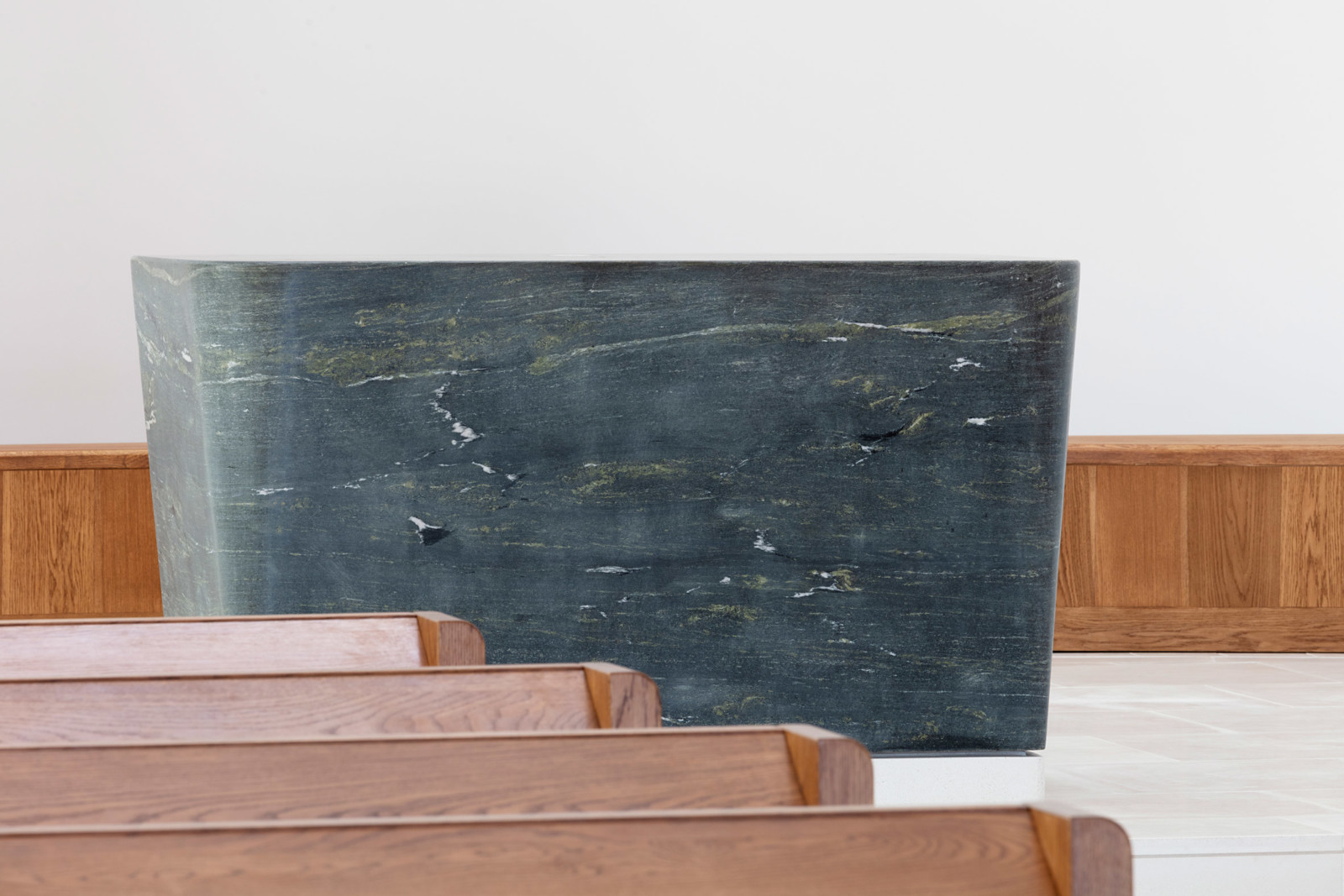
While the majority of the interior has been painted white – bar the natural-wood pews – the altar is carved from a single block of deep green onyx stone, standing out from its surroundings to serve as the focal point of the space.
The structure itself is symmetrical but every detail is asymmetrical, such as the alcoves. The altar is the only element that sits on the main axis of the building.
Steps made of white Carrara marble lead up to the altar, which have trapezoid-shaped surfaces with rounded corners to allow gathering around the sanctuary space.
雖然大部分室內裝飾都被漆成白色(天然木凳子除外),但祭壇卻是用一塊深綠色的on瑪瑙石雕刻而成,從周圍環境中突出出來,成為空間的焦點。
結構本身是對稱的,但每個細節都是不對稱的,例如壁co。 祭壇是唯一位於建築物主軸上的元素。
由白色卡拉拉大理石製成的台階通向祭壇,祭壇的梯形表面帶有圓角,可以聚集在避難所周圍。
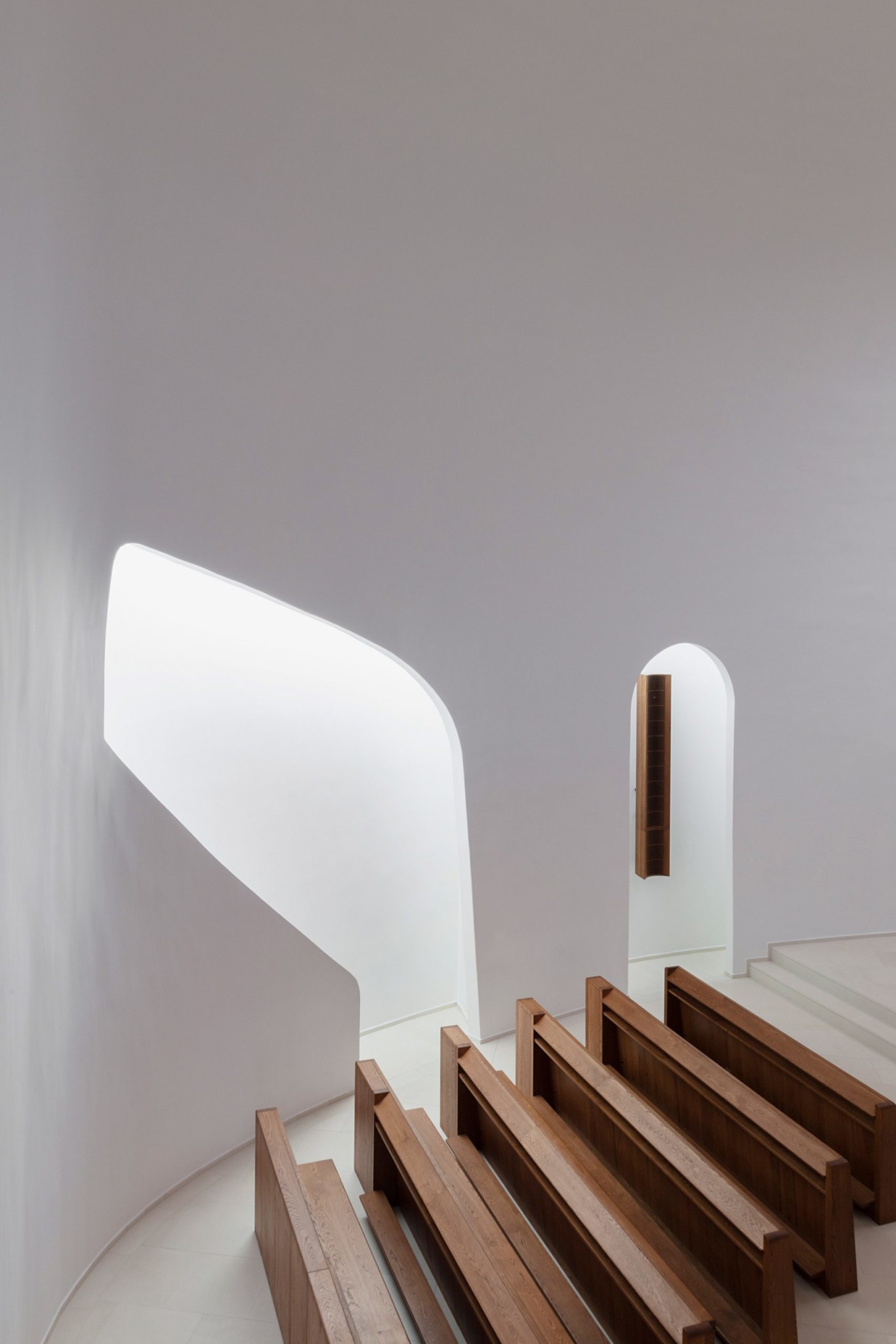
The design and construction of The Church of Pope John Paul II was carried out with the help of the local community. The church was built mainly using donations, and was consecrated in 2019.
The church has been shortlisted in the civic and cultural interior project category of this year’s Dezeen Awards.
Other projects in this category include a crematorium in Belgium designed by Rotterdam-based studio Kaan Architecten, which is made up of one rectilinear volume made from blocks of unfinished concrete.
A museum for children in Pittsburgh has also been shortlisted in the civic and cultural interior project category, which US firm KoningEizenberg Architecture renovated from the remains of a historic library that was struck by lightning.
教宗若望保祿二世教堂的設計和建造是在當地社區的幫助下進行的。 這座教堂主要是使用捐款建造的,並於2019年奉獻。
該教堂已入圍今年Dezeen獎的公民和文化室內項目類別。
此類別中的其他項目包括由位於鹿特丹的工作室Kaan Architecten設計的比利時火葬場,該火葬場由一個由未完成的混凝土塊製成的直線體積組成。
匹茲堡的一個兒童博物館也被列入公民和文化室內項目類別,美國公司KoningEizenberg Architecture對該建築進行了翻新,這座建築是由雷電擊中的一座歷史悠久的圖書館遺跡改造而成的。
FROM:https://www.dezeen.com/2020/09/19/robert-gutowski-architects-hungary-church/

